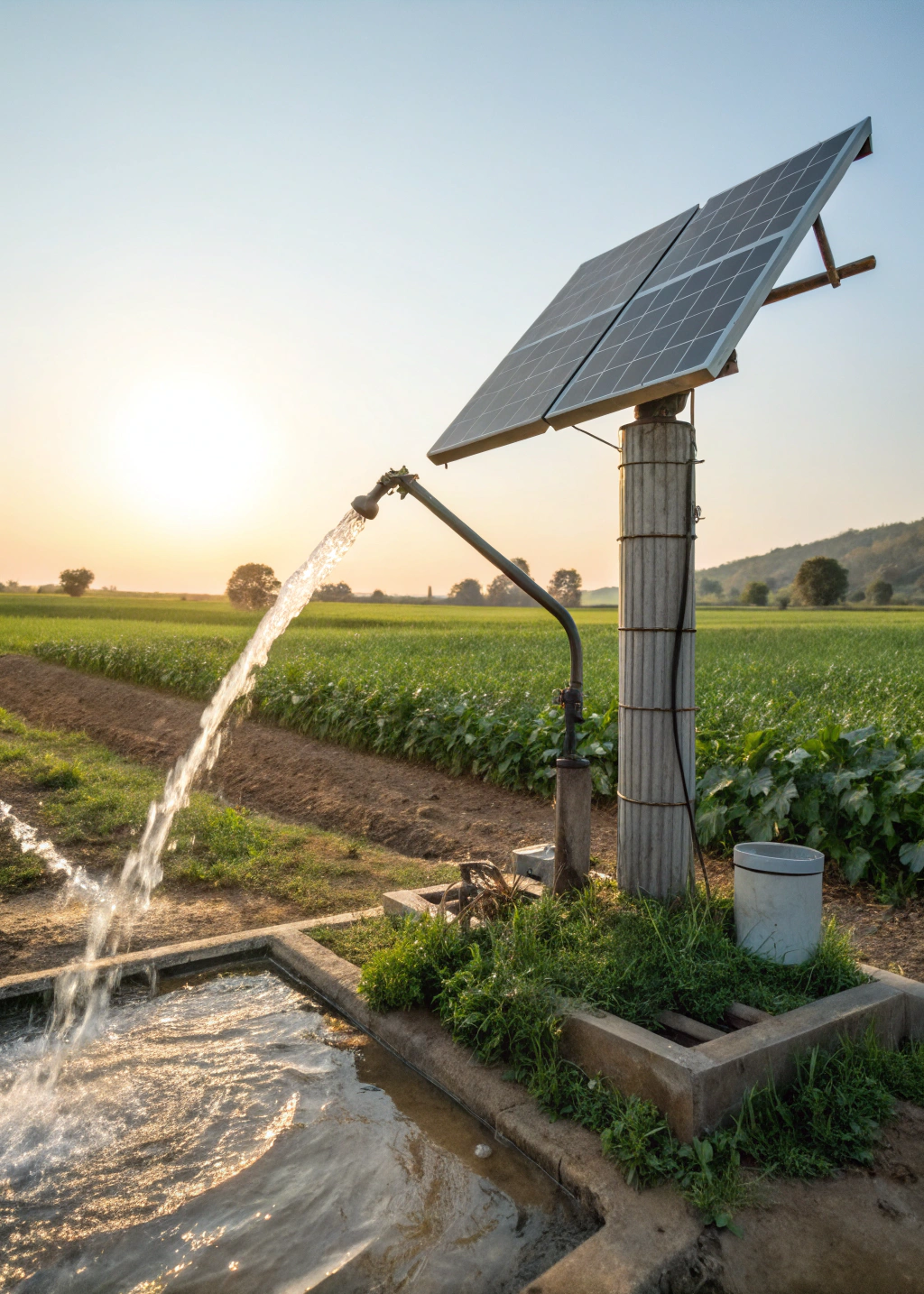How to calculate the power requirement of a solar water pump?
•
How to calculate the power requirement of a solar water pump?
Struggling to size your solar water pump system correctly? Underestimating power needs can lead to frustrating water shortages when you need it most.
To calculate a solar water pump's power requirement, use this formula: Power (W) = (Flow rate in m³/day × Total head in meters × 9.81) ÷ (3.6 × Pump efficiency × Solar hours). Always add 25% buffer for system losses.
When I installed my first solar pump in a remote farm, the math seemed daunting—until I broke it down into simple steps. The right calculation prevents overspending on panels or ending up with an underpowered system that leaves livestock thirsty.
The real challenge begins after the basic calculation—adapting it to your specific site conditions and usage patterns. Let’s explore how to tailor this formula for real-world reliability.
How to ensure continuous water supply when there is no sunlight?
What happens when clouds roll in for days and your solar panels sit idle? Without sunlight, your water supply could vanish.
Ensure 24/7 water supply by combining solar pumps with battery storage (for short outages) or a hybrid diesel/solar system (for prolonged cloud cover). Oversize your storage tank by 2-3 days' usage as a buffer.

Three Backup Strategy Tiers
1. Battery Storage (8-24 hour coverage)
- Works for: Daily cloud variations
- Example: 48V lithium battery bank sized at 10kWh can run a 1HP pump for ~5 hours
- Cost: $$$$ but zero fuel costs
2. Grid-Tie Hybrid (Unlimited backup)
- Works for: Farms near power lines
- Example: Solar pumps with automatic grid fallback
- Limitation: Requires stable grid connection
3. Diesel Generator Hybrid
- Works for: Extreme reliability needs
- Critical for: Livestock watering in monsoon regions
- Pro tip: Size generator at 1.5x pump HP for surge capacity
| Backup Type | Runtime | Best For | Maintenance |
|---|---|---|---|
| Battery | 1 day | Moderate climates | Low |
| Grid Hybrid | Unlimited | Grid-connected areas | Very Low |
| Diesel Hybrid | Unlimited | Remote critical systems | High |
How to optimize the angle and orientation of solar panels?
Ever seen solar panels lying flat in snowy areas? That's a recipe for 30% power loss!
Optimal tilt equals your latitude (adjust +15° winter/-15° summer). Face true south (northern hemisphere) or true north (southern hemisphere) with ≤10° deviation. Use a solar pathfinder app to avoid shading.
Advanced Positioning Factors
Seasonal Adjustments
- Fixed mounts: Set at latitude for annual average
- Adjustable mounts: Change 4x yearly (major solstices/equinoxes)
- Tracking systems: Gain 15-25% more power but add complexity
Shading Analysis
- Critical: Even 10% shading can cause 50% output drop
- Tools: Solar pathfinder, SunCalc.org
- My mistake: Learned the hard way when a palm tree shadow cost me 3 watering hours daily
Wind Considerations
-
30° tilt requires heavier framing in windy areas
- Hurricane zones: Consider flush-mounted panels
"The best orientation won't help if dust covers your panels—clean bi-weekly in arid areas."
How to select a pump for high-lift (>100 meters) scenarios?
Pumping water uphill to an alpine homestead? Standard solar pumps fail where specialized models succeed.
For high-lift applications (100-300m), use positive displacement pumps (screw/piston types) instead of centrifugal pumps. Pair with high-voltage solar arrays (110-300VDC) to overcome voltage drop over long cable runs.

High-Lift Pump Selection Matrix
| Pump Type | Max Head | Efficiency | Sand Tolerance | Cost per HP |
|---|---|---|---|---|
| Helical Rotor | 300m | 50-60% | Moderate | $$$$ |
| Piston Pump | 500m | 40-50% | Low | $$$$$ |
| Multi-Stage Cent. | 150m | 65-75% | High | $$$ |
Key Installation Tips
- Pipe sizing: Use larger diameter (≥1.5") to reduce friction loss
- Cable gauge: For 100m+ lifts, calculate voltage drop (keep <3%)
- Controllers: Must have dry-run protection - burned out my first pump in 3 months without it
Conclusion
Accurate solar pump sizing requires calculating daily water needs, planning for weather disruptions, optimizing solar harvest, and matching pump technology to your terrain. Start with precise math, but always build in redundancy.
(Word count: 22)




